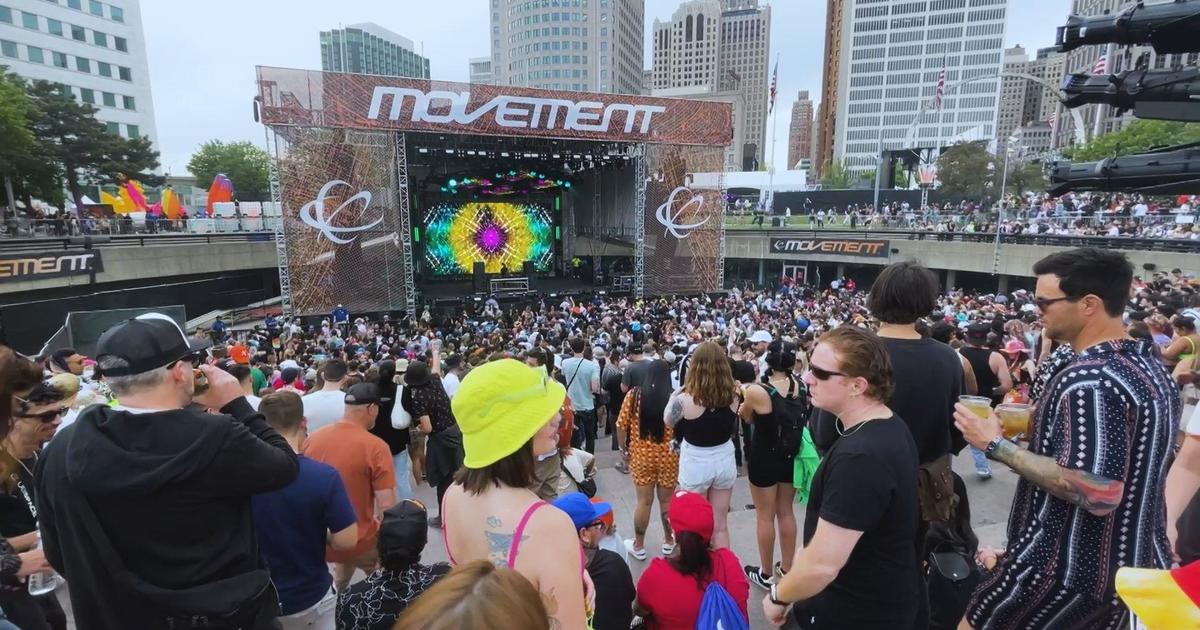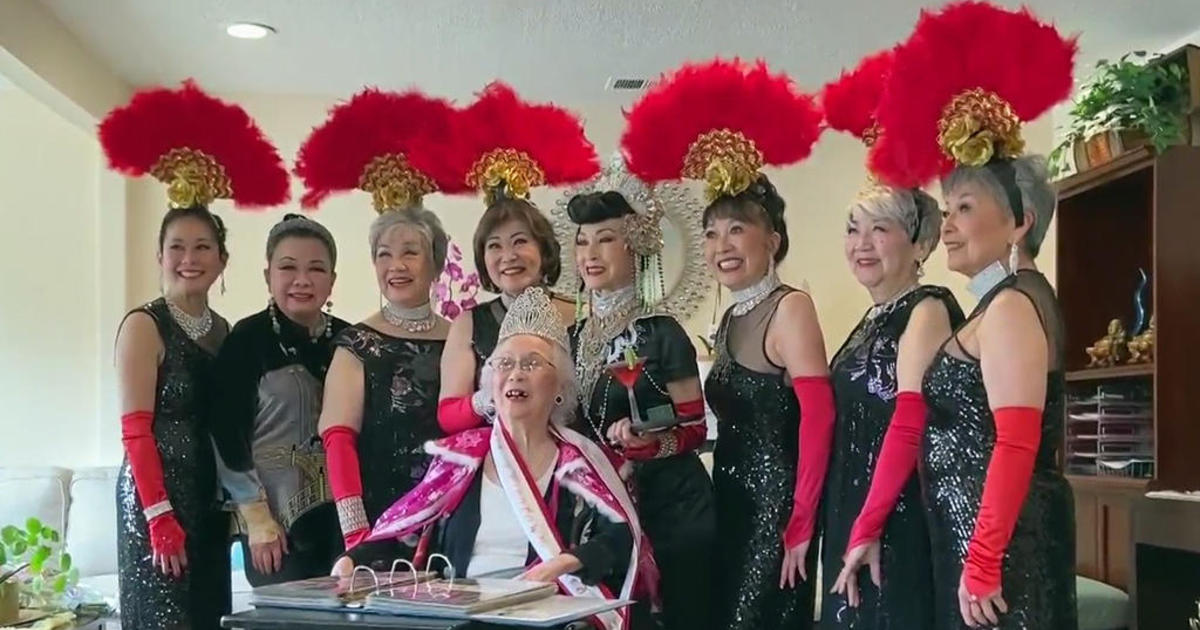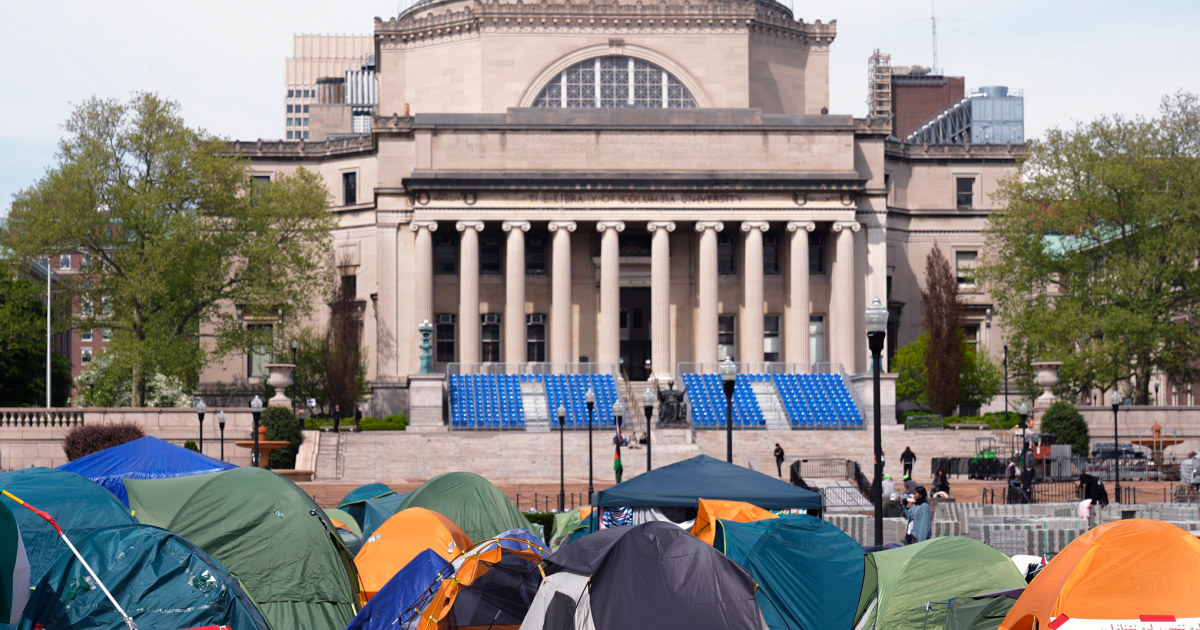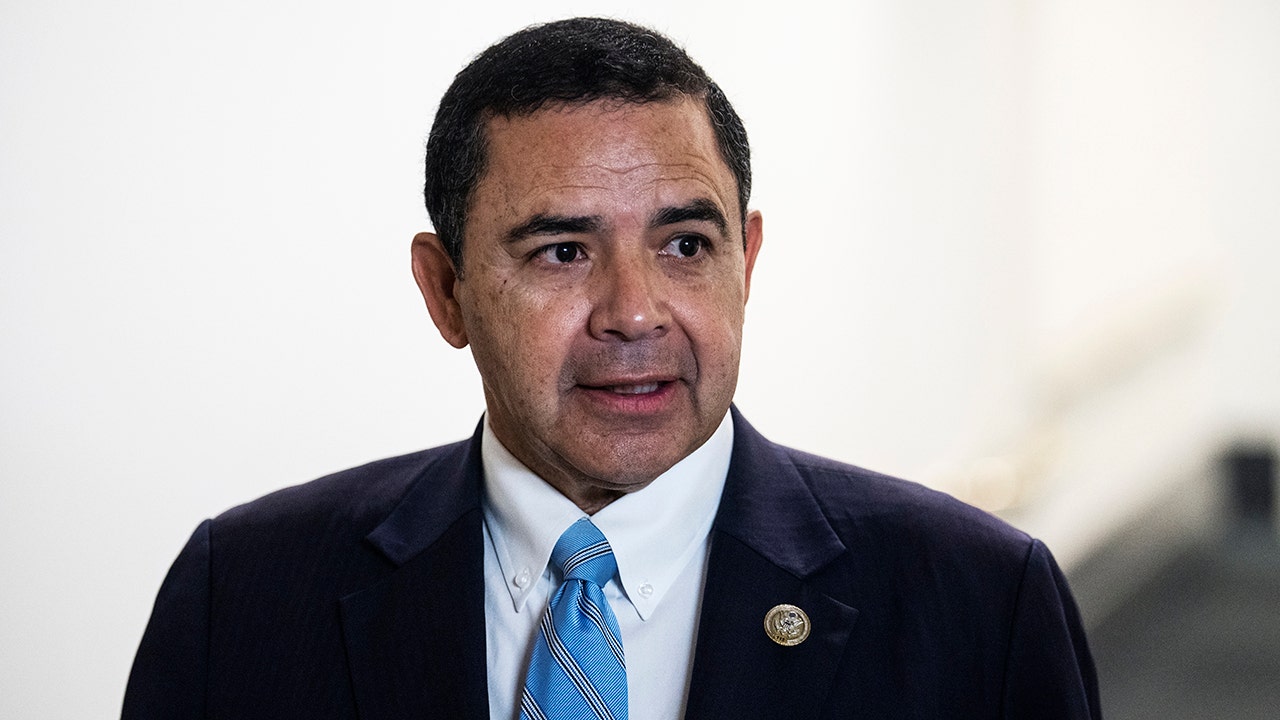Education
Florida Expected to Approve Classical Exam as a Competitor to the SAT

The Classic Learning Test is the college admissions exam that most students have never heard of. An alternative to the SAT and ACT for only a small number of mostly religious colleges, the test is known for its emphasis on the Western canon, with a big dose of Christian thought.
But on Friday, Florida’s public university system, which includes the University of Florida and Florida State University, is expected to become the first state system to approve the Classic Learning Test, or CLT, for use in admissions.
“We are always seeking ways to improve,” said Ray Rodrigues, the chancellor of the State University System of Florida, noting that the system, which serves a quarter million undergraduates, was the largest in the country to still require an entrance exam.
It’s the latest move by Gov. Ron DeSantis to shake up the education establishment, especially the College Board, the nonprofit behemoth that runs the SAT program.
Governor DeSantis, a Republican presidential candidate, has already rejected the College Board’s Advanced Placement course on African American studies, and sparred over content on gender and sexuality in A.P. Psychology.
Now, at a time when the College Board faces a dwindling number of students taking the SAT, Governor DeSantis is giving a big lift to an upstart competitor.
Jeremy Tate, the founder of Classic Learning Initiatives, the company that developed the test, insisted that the CLT is apolitical. It’s an effort, he said, to avoid educational fads and expose students to rich intellectual material.
The company, however, describes the CLT as part of “the larger educational freedom movement of our time” — language that echoes that of conservative supporters of private-school vouchers and tax credits for home-schoolers. The “end goal,” the company says, is “promoting a classical curriculum.”
After a century of dominance by the College Board and the nonprofit ACT — which administers the test of the same name — the emergence of an alternative is “healthy and overdue,” said Frederick Hess, director of education policy at the American Enterprise Institute, a center-right think tank. “It’s all for the best if this becomes a more vibrant marketplace.”
There has been pushback. The College Board and ACT say that there is little research that shows that the CLT can accurately assess college readiness. Some classics scholars say that the CLT’s vision of classical education is too narrow; others say it’s too expansive.
While there is no single definition of classical education, the CLT celebrates canonical works from Western civilization, with an emphasis on Greek, Roman and early Christian thought. Memorization, logic and debate are considered important skills.
The test has three sections: verbal reasoning, grammar and writing, and quantitative reasoning (math). Its English sections, like the SAT and ACT, ask students to read dense passages, demonstrate their comprehension via multiple-choice questions and spot grammatical errors.
But in sample materials, there is more religious thought, with passages from Thomas Aquinas; Jonathan Edwards, the Great Awakening preacher; and Teresa of Ávila, a 16th-century saint.
The CLT’s “author bank” — the range of writing that could be on an exam — includes the Mesopotamian poem “The Epic of Gilgamesh,” as well as Toni Morrison, Mary Wollstonecraft, Charles Darwin, Frederick Douglass, Ida B. Wells and Mohandas K. Gandhi. It heavily features Judeo-Christian religious thinkers, such as Saint Augustine, Maimonides and Martin Luther.
Mr. Tate, a former history teacher who founded the Classic Learning Test in 2015, said his company had made an effort to diversify the material by including more passages from African and South American writers. That echoes changes made by the ACT and SAT over time, but has prompted accusations of “wokeness” from the right.
Neither the SAT nor ACT publish their author banks, which is standard practice in the testing industry. Sample exams show that both tests sometimes include classic philosophical texts, but generally not religious ones. And in comparing sample exams, the SAT and ACT tend to include more contemporary memoir and fiction, while also depicting a more diverse range of modern-day people.
Priscilla Rodriguez, a senior vice president at the College Board, said there was no blanket SAT ban on religious writing, and noted that some SAT exams had featured writings from the American founders that referenced faith.
ACT, the nonprofit, said in a written statement: “We do not, and have never, narrowly focused on any one particular intellectual tradition. ACT’s primary concern has always been reflecting the material currently in use in American schools.”
Sam Davis, 20, said some of his classmates at James Madison University in Virginia would find the CLT’s reading material “bewildering,” given their experiences reading more contemporary, secular texts.
But Mr. Davis said that as a high school student, he had found the CLT to be a better reflection of his values and education at the Veritas School, a Christian academy in Richmond, Va.
“The CLT feels like it was written by humans,” he said. “You have a test out there that offers teachers and students an excuse and an opportunity to study something that feels richer and fuller.”
There is limited data available about the Classic Learning Test. From 2016 to 2023, only about 21,000 high school juniors and seniors took the exam, according to a company report; in the high school class of 2022, 1.7 million took the SAT and 1.3 million took the ACT.
The last study on the CLT’s ability to accurately measure skills, and the performance of various demographic groups, was published in 2018; the company said new statistics would be released next month.
Ms. Rodriguez, of the College Board, said the SAT was continuously tested to ensure that students’ scores would predict their performance in college — whether they attended high school in Sarasota or Singapore, public or private, progressive or Pentecostal. The CLT does not have the same research backing, she said.
Mr. Tate has grand ambitions for his test, including an expansion into the public education system.
Given those goals, Mr. Tate said he was “nervous” about the test becoming too closely associated with “a particular partisan group.”
That concern is shared by the president of the CLT’s academic board, Angel Adams Parham, a sociologist at the University of Virginia who studies the history of race. She is personally active in Black home-schooling and Christian education.
“Yes, there are divisive politics” around classical education, Professor Parham said. “But does that mean that classical education itself is inherently divisive or exclusive? I would answer, ‘No.’”
Classics, as a discipline, has become enmeshed in its own debates over diversity, and some classics scholars are trying to shake off its reputation as an elitist subject dominated by white men. Many classicists are skeptical of the way that their field is being talked about in K-12 education.
“I could never support a test or an approach that privileges one religion and one culture above all others,” said Sarah Bond, a historian of ancient Rome at the University of Iowa.
Outside the world of religious education, colleges and students have been slow to accept the CLT. The company’s website lists a handful of secular colleges as “partners,” but several said they had little or no experience with the exam.
Stetson University, a private college in DeLand, Fla., said it would begin accepting CLT scores this year, but a spokesman said the school had not yet received requests from prospective students to submit them.
Fisk University, a historically Black college in Nashville, is listed as a partner, but said that it does not accept CLT scores.
Mr. Tate said that the company might have listed some schools because they had a general test-optional policy, suggesting openness to a broad array of admissions materials.
“We want to be No. 1 over SAT and ACT,” he said. But, he added, “We did not start the CLT because we thought standardized testing was the greatest thing in the world. We see it as a lever with a huge impact on curriculum.”

Education
How Counterprotesters at U.C.L.A. Provoked Violence, Unchecked for Hours

A satellite image of the UCLA campus.
On Tuesday night, violence erupted at an encampment that pro-Palestinian protesters had set up on April 25.
The image is annotated to show the extent of the pro-Palestinian encampment, which takes up the width of the plaza between Powell Library and Royce Hall.
The clashes began after counterprotesters tried to dismantle the encampment’s barricade. Pro-Palestinian protesters rushed to rebuild it, and violence ensued.
Arrows denote pro-Israeli counterprotesters moving towards the barricade at the edge of the encampment. Arrows show pro-Palestinian counterprotesters moving up against the same barricade.
Police arrived hours later, but they did not intervene immediately.
An arrow denotes police arriving from the same direction as the counterprotesters and moving towards the barricade.
A New York Times examination of more than 100 videos from clashes at the University of California, Los Angeles, found that violence ebbed and flowed for nearly five hours, mostly with little or no police intervention. The violence had been instigated by dozens of people who are seen in videos counterprotesting the encampment.
The videos showed counterprotesters attacking students in the pro-Palestinian encampment for several hours, including beating them with sticks, using chemical sprays and launching fireworks as weapons. As of Friday, no arrests had been made in connection with the attack.
To build a timeline of the events that night, The Times analyzed two livestreams, along with social media videos captured by journalists and witnesses.
The melee began when a group of counterprotesters started tearing away metal barriers that had been in place to cordon off pro-Palestinian protesters. Hours earlier, U.C.L.A. officials had declared the encampment illegal.
Security personnel hired by the university are seen in yellow vests standing to the side throughout the incident. A university spokesperson declined to comment on the security staff’s response.
Mel Buer/The Real News Network
It is not clear how the counterprotest was organized or what allegiances people committing the violence had. The videos show many of the counterprotesters were wearing pro-Israel slogans on their clothing. Some counterprotesters blared music, including Israel’s national anthem, a Hebrew children’s song and “Harbu Darbu,” an Israeli song about the Israel Defense Forces’ campaign in Gaza.
As counterprotesters tossed away metal barricades, one of them was seen trying to strike a person near the encampment, and another threw a piece of wood into it — some of the first signs of violence.
Attacks on the encampment continued for nearly three hours before police arrived.
Counterprotesters shot fireworks toward the encampment at least six times, according to videos analyzed by The Times. One of them went off inside, causing protesters to scream. Another exploded at the edge of the encampment. One was thrown in the direction of a group of protesters who were carrying an injured person out of the encampment.
Mel Buer/The Real News Network
Some counterprotesters sprayed chemicals both into the encampment and directly at people’s faces.
Sean Beckner-Carmitchel via Reuters
At times, counterprotesters swarmed individuals — sometimes a group descended on a single person. They could be seen punching, kicking and attacking people with makeshift weapons, including sticks, traffic cones and wooden boards.
StringersHub via Associated Press, Sergio Olmos/Calmatters
In one video, protesters sheltering inside the encampment can be heard yelling, “Do not engage! Hold the line!”
In some instances, protesters in the encampment are seen fighting back, using chemical spray on counterprotesters trying to tear down barricades or swiping at them with sticks.
Except for a brief attempt to capture a loudspeaker used by counterprotesters, and water bottles being tossed out of the encampment, none of the videos analyzed by The Times show any clear instance of encampment protesters initiating confrontations with counterprotesters beyond defending the barricades.
Shortly before 1 a.m. — more than two hours after the violence erupted — a spokesperson with the mayor’s office posted a statement that said U.C.L.A officials had called the Los Angeles Police Department for help and they were responding “immediately.”
Officers from a separate law enforcement agency — the California Highway Patrol — began assembling nearby, at about 1:45 a.m. Riot police with the L.A.P.D. joined them a few minutes later. Counterprotesters applauded their arrival, chanting “U.S.A., U.S.A., U.S.A.!”
Just four minutes after the officers arrived, counterprotesters attacked a man standing dozens of feet from the officers.
Twenty minutes after police arrive, a video shows a counterprotester spraying a chemical toward the encampment during a scuffle over a metal barricade. Another counterprotester can be seen punching someone in the head near the encampment after swinging a plank at barricades.
Fifteen minutes later, while those in the encampment chanted “Free, free Palestine,” counterprotesters organized a rush toward the barricades. During the rush, a counterprotester pulls away a metal barricade from a woman, yelling “You stand no chance, old lady.”
Throughout the intermittent violence, officers were captured on video standing about 300 feet away from the area for roughly an hour, without stepping in.
It was not until 2:42 a.m. that officers began to move toward the encampment, after which counterprotesters dispersed and the night’s violence between the two camps mostly subsided.
The L.A.P.D. and the California Highway Patrol did not answer questions from The Times about their responses on Tuesday night, deferring to U.C.L.A.
While declining to answer specific questions, a university spokesperson provided a statement to The Times from Mary Osako, U.C.L.A.’s vice chancellor of strategic communications: “We are carefully examining our security processes from that night and are grateful to U.C. President Michael Drake for also calling for an investigation. We are grateful that the fire department and medical personnel were on the scene that night.”
L.A.P.D. officers were seen putting on protective gear and walking toward the barricade around 2:50 a.m. They stood in between the encampment and the counterprotest group, and the counterprotesters began dispersing.
While police continued to stand outside the encampment, a video filmed at 3:32 a.m. shows a man who was walking away from the scene being attacked by a counterprotester, then dragged and pummeled by others. An editor at the U.C.L.A. student newspaper, the Daily Bruin, told The Times the man was a journalist at the paper, and that they were walking with other student journalists who had been covering the violence. The editor said she had also been punched and sprayed in the eyes with a chemical.
On Wednesday, U.C.L.A.’s chancellor, Gene Block, issued a statement calling the actions by “instigators” who attacked the encampment unacceptable. A spokesperson for California Gov. Gavin Newsom criticized campus law enforcement’s delayed response and said it demands answers.
Los Angeles Jewish and Muslim organizations also condemned the attacks. Hussam Ayloush, the director of the Greater Los Angeles Area office of the Council on American-Islamic Relations, called on the California attorney general to investigate the lack of police response. The Jewish Federation Los Angeles blamed U.C.L.A. officials for creating an unsafe environment over months and said the officials had “been systemically slow to respond when law enforcement is desperately needed.”
Fifteen people were reportedly injured in the attack, according to a letter sent by the president of the University of California system to the board of regents.
The night after the attack began, law enforcement warned pro-Palestinian demonstrators to leave the encampment or be arrested. By early Thursday morning, police had dismantled the encampment and arrested more than 200 people from the encampment.
Education
Video: President Biden Addresses Campus Protests

new video loaded: President Biden Addresses Campus Protests
transcript
transcript
President Biden Addresses Campus Protests
President Biden defended the right of demonstrators to protest peacefully, but condemned the “chaos” that has prevailed at many colleges nationwide.
-
Violent protest is not protected. Peaceful protest is. It’s against the law when violence occurs. Destroying property is not a peaceful protest. It’s against the law. Vandalism, trespassing, breaking windows, shutting down campuses, forcing the cancellation of classes and graduations — none of this is a peaceful protest. Threatening people, intimidating people, instilling fear in people is not peaceful protest. It’s against the law. Dissent is essential to democracy, but dissent must never lead to disorder or to denying the rights of others, so students can finish the semester and their college education. There’s the right to protest, but not the right to cause chaos. People have the right to get an education, the right to get a degree, the right to walk across the campus safely without fear of being attacked. But let’s be clear about this as well. There should be no place on any campus — no place in America — for antisemitism or threats of violence against Jewish students. There is no place for hate speech or violence of any kind, whether it’s antisemitism, Islamophobia or discrimination against Arab Americans or Palestinian Americans. It’s simply wrong. There’s no place for racism in America.
Recent episodes in Politics
Education
Where Protesters on U.S. Campuses Have Been Arrested or Detained

Police officers and university administrators have clashed with pro-Palestinian protesters on a growing number of college campuses in recent weeks, arresting students, removing encampments and threatening academic consequences. More than 2,000 people have been arrested or detained on campuses across the country.
Ala.
Alaska Ariz.
Ark.
Calif.
Colo.
Del. Fla.
Ga.
Hawaii
Idaho
Ill. Ind.
Iowa
Kan.
Ky.
La. Maine
Md.
Mass.
Mich.
Minn. Miss.
Mo.
Mont.
Neb.
Nev. N.H.
N.J.
N.M.
N.Y.
N.C. N.D.
Ohio
Okla.
Ore.
Pa. S.C.
S.D.
Tenn.
Texas
Utah Vt.
Va.
Wash.
W.Va.
Wis. Wyo.
Ala. Alaska
Ariz.
Ark.
Calif.
Colo. Del.
Fla.
Ga.
Hawaii
Idaho Ill.
Ind.
Iowa
Kan.
Ky. La.
Maine
Md.
Mass.
Mich. Minn.
Miss.
Mo.
Mont.
Neb. Nev.
N.H.
N.J.
N.M.
N.Y. N.C.
N.D.
Ohio
Okla.
Ore. Pa.
S.C.
S.D.
Tenn.
Texas Utah
Vt.
Va.
Wash.
W.Va. Wis.
Wyo.
Campus protests where arrests and detainments have taken place since April 18
The fresh wave of student activism against the war in Gaza was sparked by the arrests of at least 108 protesters at Columbia University on April 18, after administrators appeared before Congress and promised a crackdown. Since then, tensions between protesters, universities and the police have risen, prompting law enforcement to take action in some of America’s largest cities.
Arizona State University
Tempe, Ariz.
72
Cal Poly Humboldt
Arcata, Calif.
60
Case Western Reserve University
Cleveland, Ohio
20
City College of New York
New York, N.Y.
173
Columbia University
New York, N.Y.
217
Dartmouth College
Hanover, N.H.
90
Emerson College
Boston, Mass.
118
Emory University
Atlanta, Ga.
28
Florida State University
Tallahassee, Fla.
5
Fordham University
New York, N.Y.
15
-

 News1 week ago
News1 week agoLarry Webb’s deathbed confession solves 2000 cold case murder of Susan and Natasha Carter, 10, whose remains were found hours after he died
-

 News1 week ago
News1 week agoFirst cargo ship passes through new channel since Baltimore bridge collapse
-

 World1 week ago
World1 week agoHaiti Prime Minister Ariel Henry resigns, transitional council takes power
-

 World1 week ago
World1 week agoSpanish PM Pedro Sanchez suspends public duties to 'reflect'
-

 World1 week ago
World1 week agoUS secretly sent long-range ATACMS weapons to Ukraine
-

 Movie Reviews1 week ago
Movie Reviews1 week agoHumane (2024) – Movie Review
-

 News1 week ago
News1 week agoAmerican Airlines passenger alleges discrimination over use of first-class restroom
-

 Education1 week ago
Education1 week agoVideo: Johnson Condemns Pro-Palestinian Protests at Columbia University














